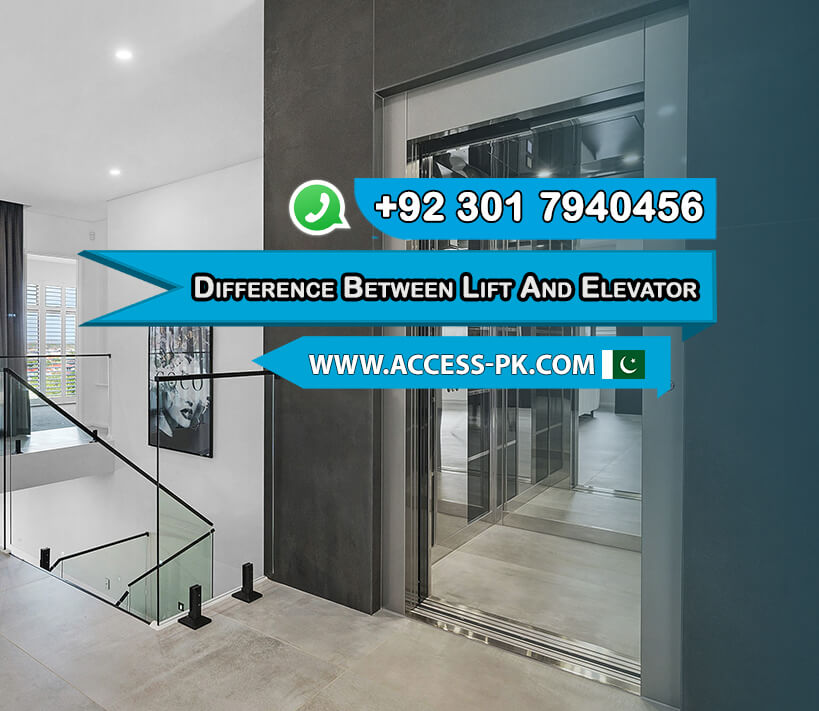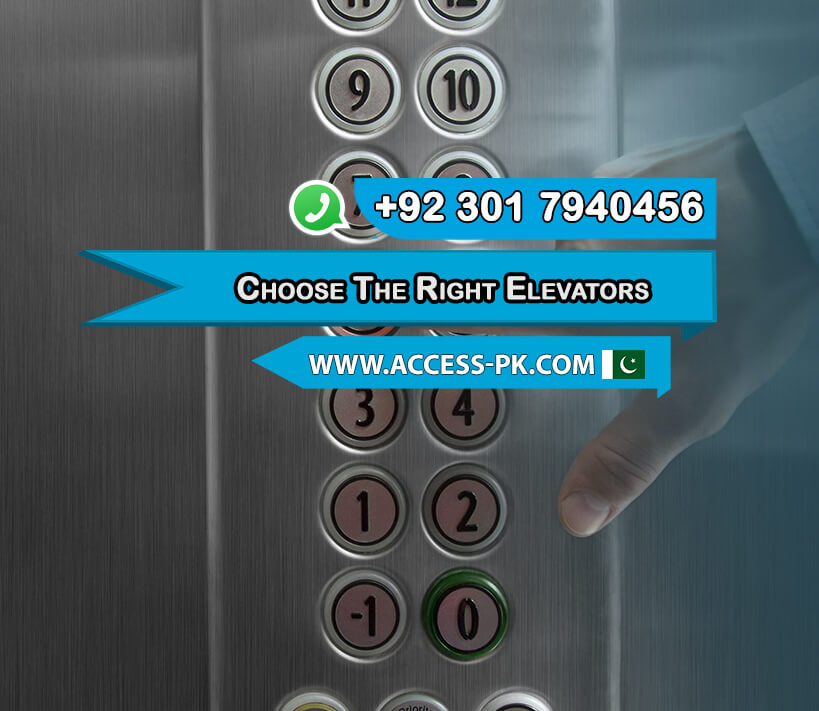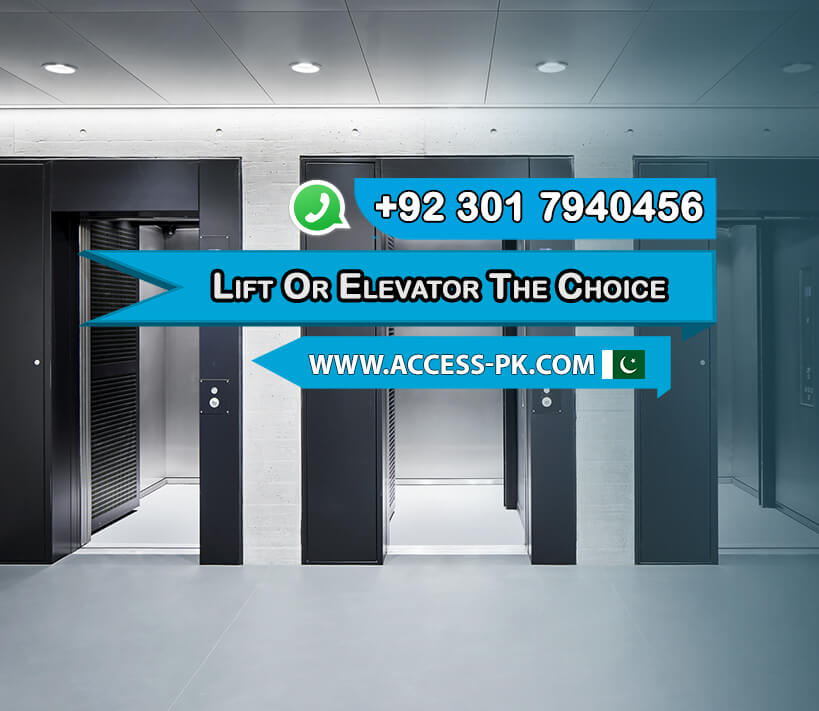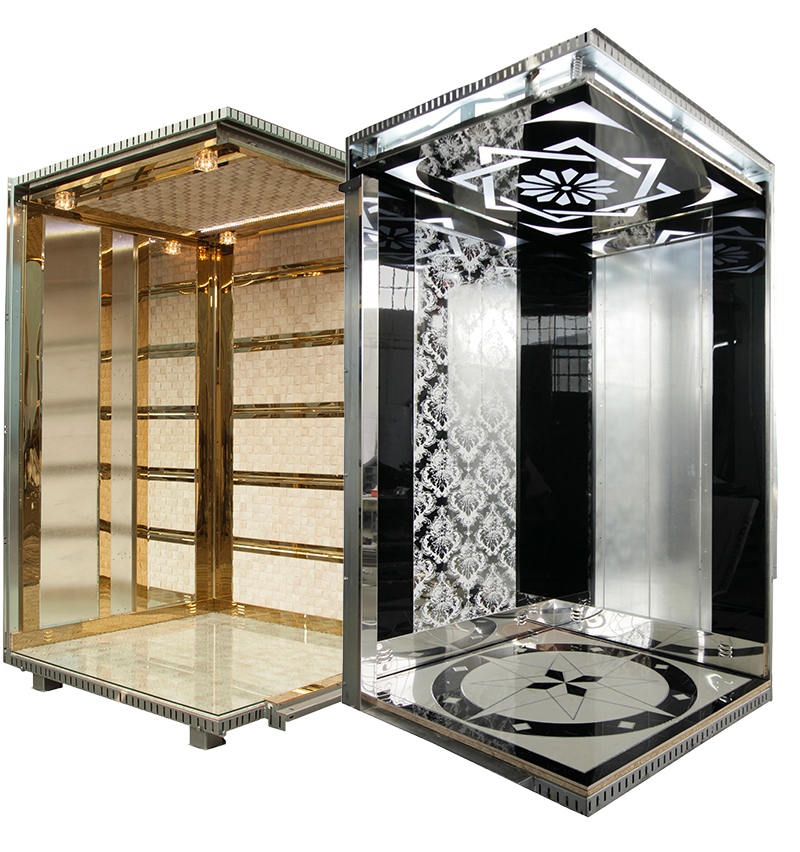When it comes to the terms Lift or Elevator the choice often depends on regional preferences. In many parts of the world, including Pakistan, the term “elevator” is commonly used. However, in countries like the UK, “lift” is the preferred term. Access Technologies, owned by Imran Rafi, caters to both terms, ensuring clarity and precision in their elevator services. This guide will help you understand the subtle differences and usage scenarios, making it easier to choose the right term for your needs.
Understanding the distinction between “lift” and “elevator” is essential for accurate communication. Both terms describe the same essential function: a mechanical system that transports people or goods vertically. Despite their functional similarities, the terminology varies by region. For instance, in Pakistan, “elevator” is the standard term, reflecting local preferences and industry practices. Transitioning between these terms can be confusing, but knowing the regional preferences helps in effective communication.
Moreover, the choice between “lift” and “elevator” can influence perceptions in various contexts. For example, using “elevator” might align better with international standards and expectations, especially in commercial and industrial settings in Pakistan. On the other hand, “lift” could be more suitable for residential or traditional contexts. This guide aims to bridge the gap, providing a clear understanding of when and why to use each term.
Get Free QuotesUnderstanding the Difference Between Lift and Elevator

When discussing vertical transportation systems, the terms Lift or Elevator are often used interchangeably. However, understanding the nuanced differences can enhance clarity, especially when addressing various audiences. The term “elevator” is predominantly used in North America and reflects modern, standardized design and technology, suited for both residential and commercial applications. Conversely, “lift” is more commonly used in the UK and other Commonwealth countries, and often conveys a more traditional or classic approach to vertical transport.
Definition of Lift
A “lift” typically refers to a device used to transport people or goods between different floors of a building. In the UK and several other countries, this term is preferred, emphasizing the simplicity and practicality of the device. Lifts can vary in design, from basic models to advanced versions with multiple safety features. In many cases, lifts are seen in residential buildings and smaller commercial structures, where they offer essential accessibility.
Definition of Elevator
An “elevator,” on the other hand, is the term predominantly used in the United States and many other countries. This term often signifies a more modern, high-tech system designed for various applications, including high-rise buildings and large commercial spaces. Elevators are engineered to meet stringent safety standards and typically feature advanced technology for efficiency and reliability. In Pakistan, the term “elevator” is commonly used, reflecting international standards and aligning with global practices in vertical transportation.
Common Misconceptions
A common misconception is that Lift or Elevator denote different types of systems. In reality, both terms describe similar mechanisms for vertical transportation. The choice of term often depends on regional preferences and industry norms rather than functional differences. Additionally, some people mistakenly believe that lifts are outdated compared to elevators. However, both systems are designed to meet safety and performance standards appropriate to their usage context. Understanding these terms helps in selecting the right system for your needs, whether you’re looking for a lift or an elevator in Pakistan.
Get Free QuotesRegional Preferences: Lift vs. Elevator Around the World

Regional preferences play a significant role in determining whether Lift or Elevator is used. In the UK, Australia, and other Commonwealth countries, the term “lift” is commonly used. This term reflects a more traditional approach to vertical transportation and is deeply ingrained in local language and practice. For instance, in residential and small commercial buildings, you will often hear people referring to a “lift” rather than an “elevator.” This preference is consistent across various sectors, including real estate and construction. The term “lift” is seen as a standard part of the vocabulary, impacting everything from design specifications to marketing.
| Elevator Type | Cost |
|---|---|
| Stair lifts | 810000 to 1770000/Pkr |
| Home Lifts | 1200000 to 2000000/Pkr |
| DIY Food Elevator | 2230000 to 3350000/Pkr |
| Two-Story Home Lift | 7020000 to 8420000/Pkr |
| Hospital Bed Elevators | 4150000 to 8300000/Pkr |
| Panoramic Elevator | 3180000 to 3870000/Pkr |
In contrast, the term “elevator” is prevalent in North America and increasingly adopted worldwide, including in Pakistan. This term aligns with modern technological standards and international practices. The use of “elevator” is common in high-rise buildings, large commercial establishments, and other advanced applications. The growing influence of global standards has led to “elevator” becoming more recognized even in regions traditionally favoring the term “lift.” This shift reflects a broader trend towards standardization in the industry, bridging regional linguistic differences and aligning with international norms.
Get Free QuotesIndustry Standards: When to Use ‘Lift’ or ‘Elevator’ in Technical Contexts

In technical contexts, the choice between Lift or Elevator often hinges on industry standards and regional regulations. For example, in technical specifications and engineering documents within the UK, “lift” is the preferred term. This standardization ensures consistency in design and construction practices specific to local codes and guidelines. In contrast, in countries like the United States and Pakistan, “elevator” is the term used in technical documentation. This alignment with global standards helps ensure that equipment meets international safety and performance criteria, facilitating easier communication and compliance across borders.
The choice of terminology also affects product labeling, marketing, and customer communication in various industries. For instance, companies operating internationally may opt for “elevator” to align with global practices and appeal to a broader audience. Conversely, local companies might use “lift” to cater to regional preferences and comply with local regulations. Understanding these industry standards is crucial for professionals working in vertical transportation, as it ensures clarity and consistency in both technical and commercial contexts. Whether dealing with a lift or an elevator in Pakistan or elsewhere, adhering to the appropriate terminology enhances accuracy and professionalism in the field.
Get Free QuotesHow to Choose the Right Term for Your Building Project

Selecting the appropriate term for your building project—whether Lift or Elevator—depends on several factors, including regional preferences, industry standards, and the specific context of your project. If you are working on a project in Pakistan, where “elevator” is the commonly used term, it is essential to align with local practices and expectations. Using the term “elevator” ensures consistency with regional norms and facilitates clear communication with local stakeholders. Additionally, consider the type of building and its intended use. For instance, high-rise buildings or commercial projects may benefit from using “elevator” to reflect modern technological standards and international practices. Conversely, if your project involves a residential building in a region where “lift” is preferred, using that term might be more appropriate.
Check Industry Standards
When choosing the right term for your building project, it is crucial to check industry standards relevant to your region. For example, in Pakistan, the term “elevator” aligns with international standards and modern technological practices. Adhering to these standards helps ensure that your project meets safety and performance criteria that are recognized globally. Industry standards often dictate not only terminology but also technical specifications and compliance requirements. By using “elevator” in Pakistan, you align your project with these established norms, facilitating smoother interactions with suppliers, contractors, and regulatory bodies. This alignment also enhances the credibility and professionalism of your project documentation and marketing materials.
Consider Your Audience
Considering your audience is essential when deciding between Lift or Elevator. The choice of terminology should reflect the preferences and expectations of the people who will interact with your project. For example, if you are working on a project targeting international clients or partners, using “elevator” may be more appropriate to align with global practices. On the other hand, if your project is intended for a local market where “lift” is the preferred term, using it can help avoid confusion and ensure that your communication resonates with the target audience. Tailoring your terminology to the audience’s expectations enhances clarity and professionalism in all aspects of your project.
Consult with Experts
Consulting with experts can provide valuable insights when choosing the right term for your building project. Industry professionals, such as architects, engineers, and project managers, can offer guidance on regional preferences and technical standards. In Pakistan, experts may recommend using “elevator” to align with local practices and international standards. Additionally, consulting with experts helps ensure that your choice of terminology complies with relevant regulations and industry norms. They can also provide advice on how to effectively communicate with different stakeholders, including clients and regulatory bodies. By leveraging expert knowledge, you can make an informed decision that enhances the overall success and professionalism of your project.
Get Free Quotes



